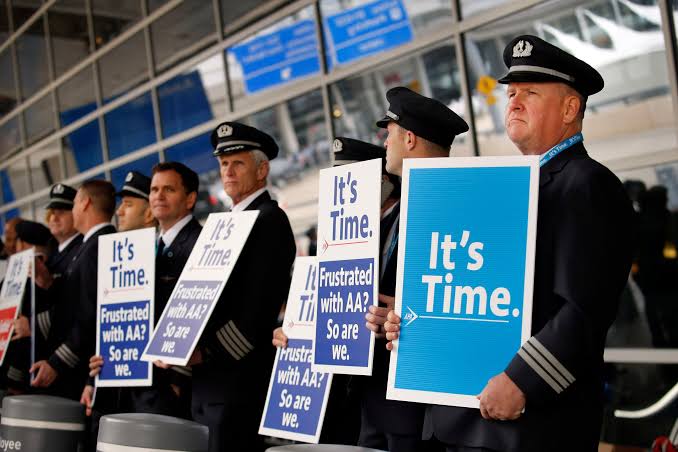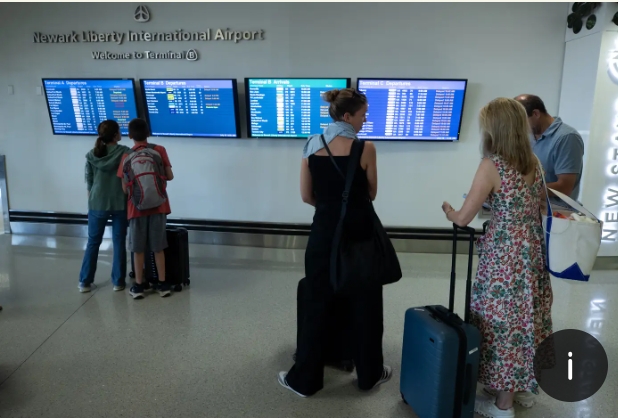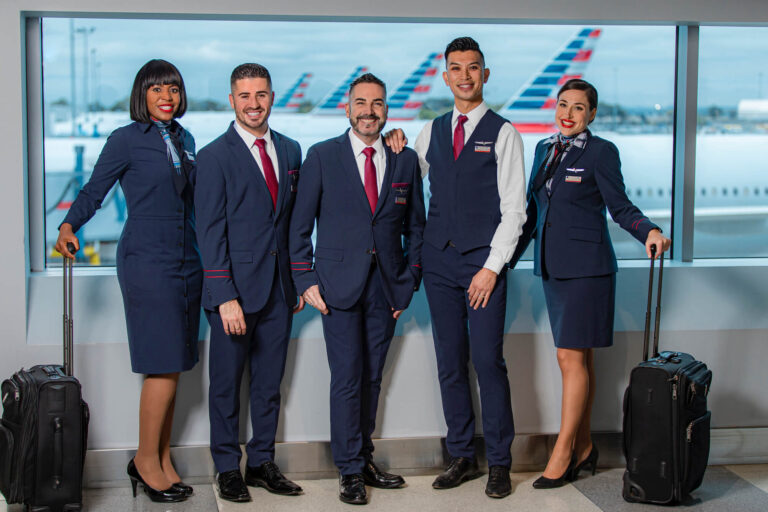American Airlines Pilot Union Rejects Historic Pay Raise, Sparking Potential Strike Threats
The recent rejection of a historic pay raise by the American Airlines pilot union has sparked significant tension within the airline industry, raising concerns about potential strike threats that could disrupt operations and impact travelers nationwide. The union’s decision highlights the growing dissatisfaction among pilots and underscores the broader challenges facing the airline industry as it grapples with labor relations, compensation demands, and the pressures of a post-pandemic recovery.
Background on the Pay Raise Proposal
American Airlines, like many other major carriers, has been negotiating with its pilots’ union, the Allied Pilots Association (APA), to secure a new contract. In response to escalating demands for better compensation, the airline proposed what it described as a “historic” pay raise package. The deal included significant salary increases, enhanced benefits, and improved working conditions. This proposal came at a time when the airline industry is experiencing a resurgence in travel demand following the pandemic, leading to increased workloads for pilots and other staff.
The proposed pay raise aimed to address some of the longstanding grievances of pilots, including stagnating wages, long hours, and the impact of the pandemic on job security. Under the proposed agreement, pilots were set to receive raises of up to 21% over a four-year period, along with bonuses and improvements in work-life balance provisions. American Airlines executives framed the offer as a necessary step to attract and retain talent in a competitive industry, particularly as pilot shortages continue to affect flight schedules.
Reasons for Rejection
Despite the seemingly generous offer, the pilots’ union overwhelmingly rejected the proposed pay raise. The reasons behind the rejection are multifaceted, reflecting deeper issues within the airline industry and the specific concerns of American Airlines pilots.
One of the primary reasons for the rejection is that many pilots feel that the proposed pay raise does not adequately address their demands for fair compensation. While the percentage increase appears substantial, pilots argue that it fails to keep pace with inflation and the rising cost of living. Additionally, pilots are concerned that the offer does not sufficiently compensate them for the increased workload and stress they have endured, especially during the pandemic.
Moreover, the union has expressed frustration over unresolved issues related to job security, scheduling, and benefits. Pilots have raised concerns about the lack of guarantees in the contract regarding future wage increases and protections against furloughs. They are also dissatisfied with the current scheduling practices, which often result in long hours, irregular shifts, and limited time off. The union has called for more predictable schedules and better work-life balance provisions, which they believe were not adequately addressed in the proposed contract.
Potential for a Strike
The rejection of the pay raise has heightened tensions between American Airlines management and the pilots’ union, raising the specter of a potential strike. While a strike is not imminent, the union’s decision to reject the contract signals a willingness to escalate the dispute if their demands are not met. The threat of a strike is a powerful bargaining tool for the union, as it could have significant consequences for the airline’s operations and financial performance.
A strike by American Airlines pilots would have a profound impact on the airline’s ability to maintain its flight schedule. With thousands of daily flights across the globe, even a short-term strike could lead to widespread cancellations and delays, disrupting travel plans for millions of passengers. The financial cost to American Airlines could be substantial, as the airline would likely face lost revenue, customer compensation claims, and damage to its reputation.
The potential for a strike also raises broader concerns about labor unrest in the airline industry. American Airlines is not the only carrier facing labor disputes; other airlines are also in the midst of tense negotiations with their pilots and other employees. A strike at American Airlines could embolden unions at other airlines to take similar action, leading to a wave of labor disruptions across the industry.
Broader Implications for the Airline Industry
The standoff between American Airlines and its pilots highlights the broader challenges facing the airline industry as it emerges from the pandemic. The pandemic exacerbated existing tensions between airline management and labor unions, as employees faced furloughs, pay cuts, and increased workloads. As travel demand rebounds, airlines are under pressure to restore pre-pandemic service levels, but they are also grappling with labor shortages and rising operational costs.
The situation at American Airlines underscores the difficulties airlines face in balancing the need to attract and retain skilled workers with the need to manage costs. Pilots, who are in high demand, are leveraging their bargaining power to secure better pay and working conditions. However, airlines are constrained by the need to keep fares competitive and manage their debt levels, which have ballooned during the pandemic.
The outcome of the negotiations at American Airlines could set a precedent for the industry. If the airline ultimately agrees to the union’s demands, other pilot unions may push for similar concessions, leading to higher labor costs across the board. Conversely, if American Airlines takes a hard line and refuses to meet the union’s demands, it could risk a prolonged dispute that disrupts operations and damages its reputation.
Possible Resolutions
Both American Airlines and the pilots’ union have a vested interest in reaching a resolution that avoids a strike. For the airline, the priority is to maintain operational stability and avoid the financial losses and reputational damage that a strike would entail. For the union, the goal is to secure a contract that meets its members’ demands while preserving their jobs and the airline’s long-term viability.
One possible resolution could involve further negotiations to refine the terms of the proposed pay raise. The airline may offer additional concessions on issues such as scheduling flexibility, job security, and long-term wage increases. In exchange, the union could agree to a modified pay raise structure that addresses the airline’s cost concerns while still providing meaningful improvements for pilots.
Another potential resolution could involve the intervention of a federal mediator. The National Mediation Board (NMB) often steps in during labor disputes in the airline industry to facilitate negotiations and prevent strikes. If the NMB becomes involved, it could help both parties find common ground and reach an agreement that satisfies both the pilots and the airline.
The rejection of the historic pay raise by the American Airlines pilot union has brought the airline to a critical juncture in its labor relations. With the threat of a strike looming, both the airline and the union face significant risks and challenges. The outcome of this dispute will have far-reaching implications, not only for American Airlines but for the entire airline industry. As negotiations continue, both sides will need to navigate the complex dynamics of compensation, job security, and operational demands to reach a resolution that ensures the long-term stability and success of the airline.






